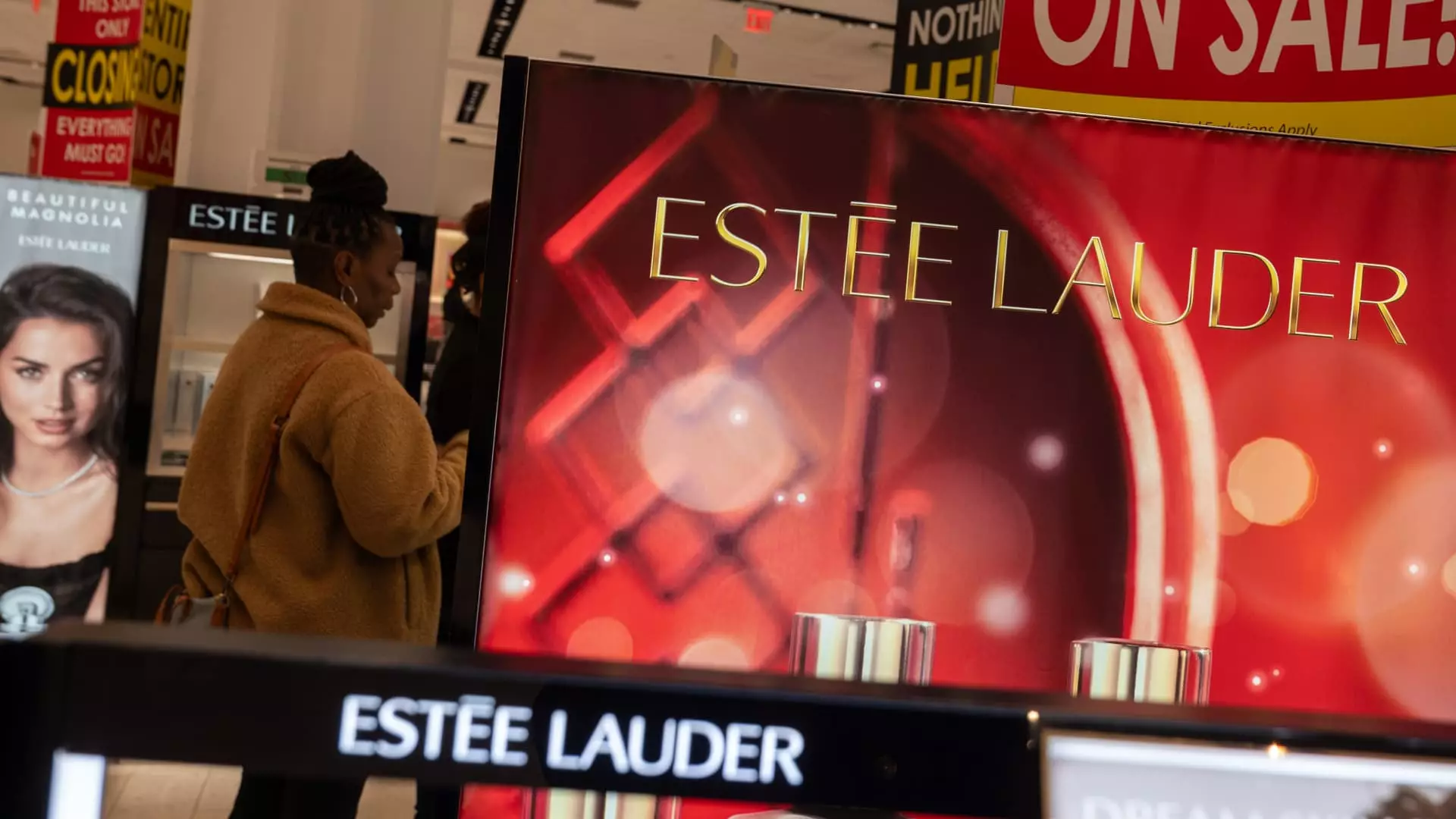The beauty industry is currently grappling with significant setbacks, as recent earnings reports from major players like E.l.f. Beauty and Estee Lauder reveal troubling trends. E.l.f. Beauty, once a frontrunner in the industry, experienced an alarming 29% decline in its stock value, marking its steepest drop since August 2018. While the brand did report a revenue increase for its fiscal third quarter, it fell short of expectations for adjusted earnings per share and severely revised its annual guidance downward. The forecast now indicates anticipated sales between $1.3 billion and $1.31 billion rather than the previous estimate of $1.32 billion to $1.34 billion. This revelation rattled investors and prompted several financial analysts, including those from Morgan Stanley and UBS, to downgrade their ratings on E.l.f. to neutral or equal weight, highlighting a bleak outlook for the company.
Challenges Worsen for Estee Lauder
Estee Lauder is also feeling the strain, with its shares plummeting 22% over the past week. This decline is particularly alarming, as it marks the company’s worst performance since November. The brand announced significant workforce reductions, projecting job cuts between 5,800 to 7,000 by the end of fiscal 2026, a move that underscores its struggle in a challenging market. Additionally, the company cited diminishing demand for travel retail in Asia, a sector that has been a vital revenue stream. Although Estee Lauder managed to exceed revenue and earnings expectations for the second quarter, the larger narrative suggests a company grappling with internal issues. Stéphane de La Faverie, the newly appointed CEO, candidly expressed the company’s struggles to adapt to burgeoning growth opportunities, further compounding investor concerns.
The declining fortunes of these marquee brands reverberate throughout the beauty sector. Ulta Beauty and Coty, two other key players, also saw their stock values dip by 9% and nearly 8% respectively. For Ulta, this was its worst performance since April, while Coty’s shares experienced a fall reminiscent of its struggles in October. Notably, during the earnings call, Amin of E.l.f. acknowledged a decrease in sales at Ulta, indicating that the tough times for one brand could easily spill over into another, illustrating an industry-wide malaise.
Further complicating the landscape for beauty companies are external economic factors, notably the geopolitical climate surrounding tariffs. Recent moves by China to impose tariffs on certain U.S. imports in retaliation to additional tariffs proposed by the Trump administration add another layer of uncertainty. With approximately 80% of E.l.f.’s production based in China, the company’s leadership expressed a mix of concern and relief when tariffs were capped at a lower rate than initially feared. This ongoing trade tension poses significant risks to profit margins across the beauty sector, making it imperative for companies to adapt swiftly.
As the beauty industry navigates these turbulent times, it remains essential for companies to reassess their strategies and pivot accordingly. E.l.f., Estee Lauder, and their counterparts must not only respond to immediate financial pressures but also to shifting consumer preferences and a challenging economic climate. The challenges ahead are formidable, but there is also a potential for rebirth and innovation if these brands choose to rethink their approaches to the market.


Leave a Reply